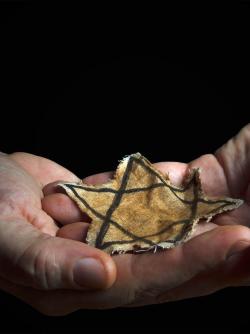Mary: Lady of All Nations?
Mary, mother of Jesus, is among the most well-known figures venerated in Catholic devotions and liturgy. But too few understand the real origins behind the religious rites and customs that bear her name.
For Roman Catholics around the world, the month of May has long been a time of special devotion to Mary, the mother of Jesus Christ. As Pope Paul VI described it in his encyclical Mense Maio, May is “the month during which Christians, in their churches and their homes, offer the Virgin Mother more fervent and loving acts of homage and veneration; and it is the month in which a greater abundance of God’s merciful gifts comes down to us from our Mother’s throne” (April 29, 1965).
As the human woman who gave birth to Jesus Christ, who was the Logos or Word (Spokesman) of God born as a fully human being, Mary received from God a very special blessing. She was indeed “highly favored” by God (Luke 1:28). To be a human parent of God in the flesh was an extraordinary role, and God found Mary fit for that role. She did not know everything about His mission; at the Cana wedding, Jesus had to admonish her, “My hour has not yet come” (John 2:4). Yet this was a woman to whom many private matters about Jesus were entrusted from His birth (Luke 2:19), and He reciprocated with love for her throughout His life. Even at His crucifixion, taking on the sins of all humanity, He showed His filial love for Mary, ensuring that she would be cared for after His death (John 19:25–27).
But how did traditions develop that turned this faithful follower of Christ into someone whom many consider His peer—even His co-Redeemer, venerating her almost as a “god” in her own right? This certainly wasn’t part of first-century Church teaching. Scholars acknowledge that this focus on Mary was totally absent in the early Church: “Seeing that this doctrine is not contained, at least explicitly in the earlier forms of the Apostles’ Creed, there is perhaps no ground for surprise if we do not meet with any clear traces of the cultus of the Blessed Virgin in the first Christian centuries” (“Devotion to the Blessed Virgin Mary,” The Catholic Encyclopedia).
So, where did these ideas come from? Today, some venerate “Saint Mary” as “Queen of Heaven” and “Lady of All Nations”—titles that make no sense from a strictly biblical perspective. We need to remember that Jesus came into a world dominated by Greek and Roman culture—a culture that shaped early distortions of Jesus’ true teachings. People across the Roman Empire worshiped a variety of gods and goddesses that were known by different names in different regions but were considered the “same” figure in different locales. Statues of these deities were often housed in magnificent shrines and temples and were worshiped with elaborate ceremonies that sometimes included secret rites and temple prostitution. Festivals of the gods were public holidays that filled the social calendar.
A prime example of this was found in Ephesus, with its great temple of Diana—one of the wonders of the ancient world (Acts 19:21–40). In 431 AD, the Roman church’s third ecumenical council met in Ephesus and proclaimed Mary the “Mother of God” and the object of prayers and devotions. But why was Mary given this title? Why was Ephesus chosen as the place where this new dogma would be announced?
Other Marys Before Mary?
The Diana of Ephesus was a goddess “whom all Asia and the world worship” (Acts 19:27). Diana was the Roman name for the Greek deity Artemis, “the goddess of wild animals, the hunt, and vegetation and of chastity and childbirth” (“Artemis,” Britannica.com). She is often portrayed as a virgin and the “Mistress of Animals” (Britannica.com). Her statues depict a multi-breasted figure wearing a turreted crown. Artemis incorporates many features of the great mother goddess who was worshiped under a variety of names in the ancient world.
“Artemis is a deity of very ancient origins who survived and attracted great popularity in Asia Minor and Greece into Christian times, when… much of her ethos was transferred to the Virgin Mary. Both figures enjoyed major sanctuaries at Ephesus” (Michael Jordan, Encyclopedia of Gods, emphasis added). By building a church for Mary in Ephesus and declaring her the “Mother of God” near the great temple of the mother goddess Diana, the Roman church simply borrowed and adapted ancient traditions that allowed new converts to continue pagan practices in a “Christian” context!
But where did the titles “Mother of God” and “Queen of Heaven” come from? In central Asia Minor, more than a thousand years before the Romans, the Hittites also worshiped a great mother goddess. On the side of a hill near Sardis is a giant rock carving of a mother goddess that the ancient poets Homer, Ovid, and Sophocles describe as the “Mother of the Gods, the oldest goddess of all” (John Garstang, The Hittite Empire, emphasis added). On statues and carvings, this Hittite deity “assumes the aspect of a goddess of the skies, or Queen of Heaven, a familiar attribute of Astarte” (Garstang). Astarte was the Phoenician goddess of war, the evening star, sexual love, and fertility. Temple prostitution was part of her worship. She was often depicted naked, wearing “a crown of cow’s horns enclosing a sun disc”—similar to the Egyptian goddess Isis (Jordan). The Roman army spread the worship of this ancient Hittite goddess across Europe from Germany to Britain because her cult “found great favour among the soldiers” (Garstang).
Madonna with Child?
And what about the Madonna and child? In Egypt, Isis was worshiped as one of the greatest deities. She was usually depicted seated on a throne “holding the child Horus…. Isis and Horus were regarded by the Egyptians as the perfect mother and son” (Encyclopaedia Britannica, 15th ed., vol. 6, emphasis added). From Egypt, the worship of Isis spread to Greece and Rome, where she was called Stella Maris (star of the sea), the patroness of seafarers and the “queen of heaven” (E.A. Budge, The Gods of the Egyptians, vol. 2, emphasis added). Numerous scholars note that “the Isis cult influenced the portrayal of the Christian Virgin Mary, who was also known as Stella Maris and whose portraits with the Christ often bear a striking similarity to those of Isis with Horus” (Jordan), and that “it is clear that the early Christians bestowed some of her [Isis’] attributes upon the Virgin Mary... pictures and sculptures wherein she is represented in the act of suckling her child Horus formed the foundation for the Christian figures and paintings of the Madonna and Child” (Budge).
“[M]any of the heresies of the early Christian Church in Egypt were caused by the survival of ideas and beliefs connected with the old native gods which the converts to Christianity wished to adapt to their new creed” (Budge, emphasis added). In parts of Egypt, by 400 AD, “Mary the Virgin and Christ had taken the places of Isis and Horus, and the ‘God-mother,’ or ‘mother of the god,’ was no longer Isis, but Mary” (Budge). This is how the worship of a mother goddess became part of so-called Christianity on the unbiblical pretext of devotion to Christ’s mother. Nominal converts embraced this “Christianity” while bringing their devotion to a mother goddess—and her titles—with them!
This was nothing new. In the Bible we read that the ancient Israelites—including Solomon—turned from God and worshipped Baal and Asherah or Ashtoreth (Judges 2:11–13; 10:6; 1 Kings 11:1–11), whose rituals involved temple prostitution (2 Kings 23:6–7). The Bible speaks of women weaving garments for a statue of this goddess that had been placed in the temple of God (2 Kings 21:1–7; 23:6–7). Historians comment that “Aserah is the great mother goddess of Canaan” (Jordan). Scholars also connect Ashtoreth with the Babylonian goddess Ishtar, the Phoenician Astarte, and the Greek Aphrodite—fertility goddesses whose worship also involved temple prostitution.
Ishtar was the most important goddess in the ancient Middle East—especially in Babylon and Nineveh. She was the goddess of war and sexuality. She was called the “Queen of the Universe,” the “protectress of prostitutes,” and the “patroness of the alehouse” (“Ishtar,” Britannica.com). Her cult, which included temple prostitution, was widespread and popular. Ishtar was also worshipped as Inanna the goddess of love and war, and called the “Queen of heaven” (Manfred Lurker, The Routledge Dictionary of Gods and Goddesses, Devils and Demons). Another Canaanite and Phoenician goddess was Anat, a fertility goddess, sister of Baal, and daughter of the sun god. She was called “Lady of the Mountain,” “mother of the gods,” “queen of heaven,” and the “virgin Anat” (Jordan). The Bible and history plainly show that the ancient Israelites and the early Catholic church adopted the worship of a mother goddess, complete with her titles, from their pagan neighbors. But what does all this have to do with us today, and why is it significant?
Worshipping False Idols is an Abomination to God
When God brought the ancient Israelites out of Egypt, He commanded them, “You shall not make for yourself a carved image... you shall not bow down to them nor serve them…. You shall not make idols for yourselves” (Exodus 20:4–5; Leviticus 26:1). Yet they soon began to worship a golden calf, and were punished for doing so (Exodus 32). The Israelites were also given God’s clear instruction not to adopt pagan religious practices, which God viewed as abominations: “You shall not worship the Lord your God in that way” (Deuteronomy 12:29–32; 17:2–7). However, these warnings were repeatedly ignored as the Israelites turned to the worship of Baal and Ashtoreth—the mother goddess of the Canaanites, their “queen of heaven.” For these sins—including the practice of kissing their idols (Hosea 13:2)—the ancient nation of Israel incurred the anger of God and was carried off to captivity in Assyria!
The nation of Judah made the same mistakes. They provoked God to anger when they “burned incense to the queen of heaven and poured out drink offerings to her… [and made] cakes for her, to worship her” (Jeremiah 44:19). The image they worshiped as the queen of heaven was the Babylonian goddess Ishtar. Other rituals included “weeping for Tammuz”—the dead husband of Ishtar—and “worshiping the sun toward the east” (Ezekiel 8:10–18). These practices continue today in making hot cross buns and holding sunrise services at Easter.
The Bible reveals that these are not trivial matters in God’s sight, but are abominations that God hates. The nation of Judah spent 70 years in captivity in Babylon as punishment for its idolatry. Early Catholic church leaders allowing people to continue their pagan traditions under new “Christian” names were following this same misguided reasoning that ignored clear biblical instructions. The Bible warns that nations following this example—adopting and adapting pagan practices—will suffer a similar fate (Jeremiah 16:10–13).
Lady of Europe… and the World?
Between 1945 and 1959, a Dutch woman in Amsterdam reported what she claimed were more than 50 visions of Mary. Though the Roman Catholic archbishop of Amsterdam would not proclaim the visions as legitimate, devotion to “the Lady of All Nations”—the name this figure supposedly gave herself—spread across the Netherlands, and even across Europe and beyond. Interestingly, one skeptical notice issued by the Congregation for the Doctrine of the Faith urged Roman Catholics to practice devotion to the “Queen of the Universe” instead, in forms “recognized and recommended by the Church” (Alateia.org, October 20, 2020).
But why is there growing interest in Mary, whether as Queen of the Universe, Queen of Heaven, or Lady of All Nations? Scripture reveals that, just before the return of Jesus Christ, a “beast” power composed of ten nations will emerge in Europe from the ashes of the old Roman Empire (Daniel 2, 7; Revelation 13, 17–18). This confederation will be ridden by a “woman,” a rich and powerful church described as a queen whose roots go back to ancient Babylon and as a mother of harlots—other misguided churches—who has made the world drunk with her false doctrines (Revelation 18:7; 17:1–6). This woman—called “daughter of Babylon” and the “Lady of Kingdoms” (Isaiah 47:1, 5)—will claim to be the one true Church, saying, “I am, and there is no one else besides me” (Isaiah 47:8–9; Revelation 18:7–8). She will lead an end-time movement to bring her separated “children” back to their “mother” church.
Europe is clearly a fertile ground for this development. Already, Roman Catholics have consecrated to Mary several European regions. In 1996, Pope John Paul II called Gibraltar’s Shrine of Our Lady of Europe (established in 1309 by Spain’s King Ferdinand IV) a “potent symbol” for the unification of Europe and “a place where, under the patronage of Mary, the human family will be drawn ever more closely into fraternal unity and peaceful coexistence” (“The Shrine of Our Lady of Europe,” Gibraltar.com). Significantly for those who understand Scripture and history, the shrine is not far from a cave where, seven centuries before Christ, Phoenician seafarers set up a shrine to Astarte, their own Queen of Heaven.
Even the New Europe is awash with Marian symbolism. The Council of Europe observes Europe Day on May 5—the same day celebrated as the feast day of Our Lady of Europe. The flag of the European Union—a ring of twelve gold stars on a blue background—is drawn from pictures of the Madonna with twelve stars in a halo around her head. And in Strasbourg, France—official seat of the European Parliament—the town’s cathedral features a “window of Europe” depicting a Madonna and child, with a halo of twelve stars and crescent moons along the edges.
What Would the Real Mary Think?
As Europe rises to its prophesied place in end-time religious and political events, what role will Mary play? Many who reject traditional religions as “patriarchal” are open to the worship of a “mother figure.” Even Islam has a connection to Mary, a figure venerated in the Quran; one of the most famous Marian shrines is found in Fatima, Portugal—a village named for Muhammad’s daughter. Bishop Fulton J. Sheen, who popularized Roman Catholicism through his writings and television appearances, pointed out that when statues of Our Lady of Fatima are shown in Muslim countries, large crowds gather to venerate her image. As we come closer to the end of this age, watch for more attempts by powerful political figures to co-opt Mary for their purposes. And watch for powerful devotees of Mary to seek greater influence in the political arena.
Scripture records that when Jesus was told, “Look, Your mother and Your brothers are outside seeking You,” He proclaimed that “whoever does the will of God is My brother and My sister and mother” (Mark 3:32–35). Are you a doer of God’s will? If so, remember that Christ loves you and values you just as He loved His mother Mary.
The example of Mary should not be corrupted by unscriptural pagan ideas drawn from goddess worship. When Mary is resurrected at Christ’s return, along with all the other faithful Christians who have lived and died, she will be appalled by the pagan distortions counterfeit Christianity has promoted in her name. True Christians, however, can and should follow the real Mary’s example of love and faithfulness to her Savior, Jesus Christ.






